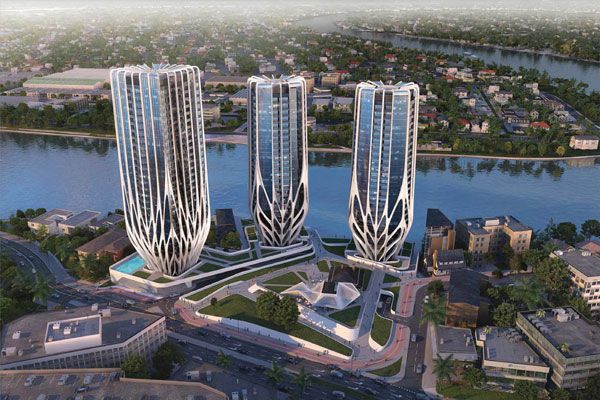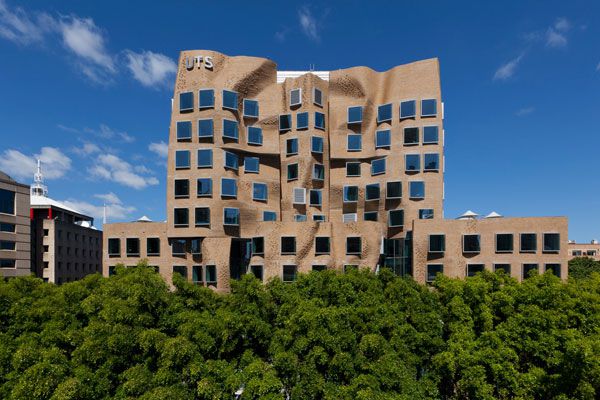Indesign Live reporter, Sarah Bristow reports on the controversial rise of the celebrity creative, and what it means for local firms and cityscapes.

September 30th, 2015
In a celebrity-obsessed age, the concept of stardom has managed to infiltrate professions far beyond the film industry, including the domain of architecture. The celebrity of the architectural set is the starchitect, a growing group of creatives renowned for their distinctive style of design.
These are the architects with a trademark – the kind of style that can be recognised within a heartbeat. Think Le Corbusier, Frank Gehry and Frank Lloyd Wright.
But what is the effect these celebrity creative’s have on our cityscapes? While they bring unparalleled interest and distinction via an interesting landscape, the existence of the starchitect is one fraught with controversy.
On the one hand, the starchitect is a clever marketing tool. A big name draws attention – bringing fame and notoriety to a building or space before building has even commenced. This is what is deemed the ‘Bilbao Effect’. Guggenheim Museum Bilbao was the creation of leading starchitect Frank Gehry. The curvaceous structure is a classic Gehry creation – all mass of linear manipulation, a bundle of sweeping buildings to form a practical construction. A structural statement that poured 168 million euros into the economy, with one million people visiting it annually.
Australia is not immune to the lure of the starchitect, perhaps seduced by the premise of international attention. Zaha Hadid is about to make her mark on the designs of Queensland cities with the proposed Toowong tower development in Brisbane, as well as a pair of towers at Mariner’s Cove on the Gold Coast. Would a local firm have done the same job? Yes. But the use of Hadid assists in boosting the state’s profile within international circles.

Dr Chau Chak Wing Building
Frank Gehry this year also unveiled a striking new building in the Dr Chau Chak Wing Building at UTS. The paper bag style property was the most recent collaboration between starchitects and educational institutions. In 2012, Moshe Safdie designed the musical space for Melbourne’s Monash University. The Sydney Morning Herald rather scathingly commented on Safdie’s practice’s appointment: “As for Frank Gehry in Sydney before him, the column inches dedicated to the Moshe Safdie building proposed for Monash University prove two things: big-name architects make news and universities get top marks for marketing.”
But what does this mean for Australian architects? The rise of the starchitect creates the fear that local firms will miss out on major projects because of big international names and reputations.
There is also fear that international names come to a destination without an understanding for its culture, or existing cityscape. As Aus Design Review reported on the Hadid proposition in particular, the local architecture scene wasn’t happy. “The chief concern in Queensland is the homogeneity of works, and whether the celebrity architect’s creative agenda is contextually appropriate to the site. The three Grace on Coronation buildings are markedly similar in appearance to the pair of multi residential towers planned for the Gold Coast, raising concerns that the UK-based architect’s vision for the two projects could henceforth dictate the scale and language of Queensland’s built environment.”
Architect and professor Witold Rybczynski is one particular member of the industry who seems adamantly against the idea of the architect. He told The New York Times: “Architecture, however, is a social art, rather than a personal one, a reflection of a society and its values rather than a medium of individual expression. So it’s a problem when the prevailing trend is one of franchises, particularly those of the globe-trotters: Renzo, Rem, Zaha and Frank.”
He continues that he doesn’t believe that have the knowledge of a local to possibly understand what is both wanted and needed for a space. “At minimum, imported talents just passing through town — however talented they may be — don’t intimately know the place they are working in. Sometimes it’s as simple as not understanding the climate.”
And Rybczynski has a point. In the argument of local knowledge vs the attraction of fame there is no clear winner. But perhaps the rise of the starchitect calls for closer analysis of how the concept can benefit both local talent as well as that from around the rest of the globe. Collaboration seems to be key in how to nurture both the outstandingly talented individuals from an international pool of talent, as well as that of local members of the profession. But it is both teams participation (and openness to the concept) that is really the pivotal point of contention in this matter.
As Peggy Deamer (who is a professor at the Yale school for architecture) once wrote for The New York Times, the starchitect is just another way for egotism to overshadow true talent. Her answer? “Collaboration, open-source networking, non-hierarchical practices, entrepreneurialism, streamlined production and profit-sharing do away with the singular author.” Instead for her, focus should fall back on what architecture originally stood for: “We need to focus on how our buildings perform socially, environmentally and economically over the long term.”
Hero photograph: Zaha Hadid, Toowong Towers
A searchable and comprehensive guide for specifying leading products and their suppliers
Keep up to date with the latest and greatest from our industry BFF's!

Create a configuration to suit your needs with this curved collection.

Suitable for applications ranging from schools and retail outlets to computer rooms and X-ray suites, Palettone comes in two varieties and a choice of more than fifty colours.

Savage Design’s approach to understanding the relationship between design concepts and user experience, particularly with metalwork, transcends traditional boundaries, blending timeless craftsmanship with digital innovation to create enduring elegance in objects, furnishings, and door furniture.

Channelling the enchanting ambience of the Caffè Greco in Rome, Budapest’s historic Gerbeaud, and Grossi Florentino in Melbourne, Ross Didier’s new collection evokes the designer’s affinity for café experience, while delivering refined seating for contemporary hospitality interiors.

Ostensibly Redfern’s local Chinese restaurant, Redbird is the new offering in this trendy and food-filled corner of Sydney. It’s a sumptuous interior design job that makes this hospitality venue all the more tempting.

London-based Carmody Groarke and Paris-based TVK have been announced as winners of a milestone competition for the new Bibliothèque nationale de France conservation centre.

Perth’s new Woodside Headquarters takes ‘leading by example’ to the next level – combining advanced sustainability operations with direct commercial imperatives.
An attractive architectural solution of awesome simplicity. Can be wall or bench mounted. Dimensions:As shown 500mm(W) x 480mm(D) x 170mm(H). A wide range of alternate sizes and configurations available. Applications: Commercial or residential Variations: Colours available on indent Finish: Glazed fine fireclay Designer: Nilo Gioacchini for StudioBagno
The internet never sleeps! Here's the stuff you might have missed

Paying homage to that wonderful tool of life, the book, SJK Architects’ design for the new headquarters of Penguin Random House is both a temple to the library and a captivating place to work.

Continuing our new series on the design enthusiasts who work in all sorts of different roles across the industry, we hear from Innerspace’s Creative Collaborator and State Manager NSW.